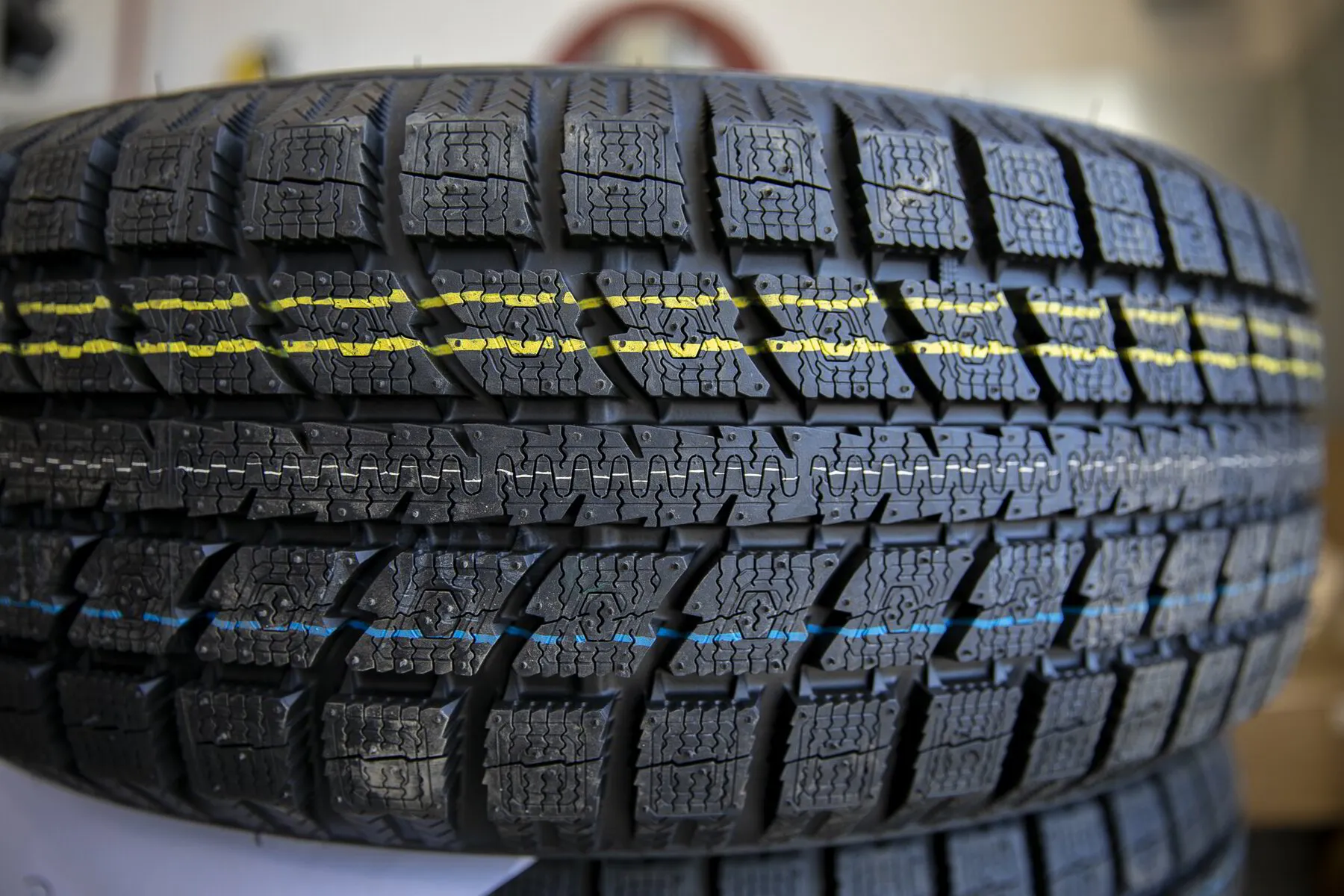Tread Depth
This is just what it sounds like. The depth (or height depending on your perspective) of rubber poking out of the the tire surface above the tire casing. Essentially, we get tread depth by measuring the deepest groove in a tire.
Tread Depth Gauge
Tread depth can be measured with a fancy little tool calibrated usually in millimeters. All four tires will not measure the same depth due to the way they wear on the vehicle. Just like your left sole may wear more deeply on the heel than your right, cars favor certain tires and wear them more. You want to go with the smallest measurement in order to determine remaining wear.
Some tires imprint the tread depth right into the rubber. If you have Nokian Winter tires from us look for these markings.
As the tire wears, the numbers disappear.
When is my Tread Depth too low?
Tread Depth is not a measurement that functions independent of tire design.
Legal Tread Depth vs. Safe Performance Tread Depth
There is something called “legal tread depth”, which is set by each state. In Alaska it is 2/32 inches. Legal tread depth is very different from “safe” tread depth. Legal tread depth is a determination that considers the integrity of the tire, not its performance. Below 2/32 the tire is in danger of disintegrating due to wearing structural materials not intended to come in contact with road surfaces and debris.
Penny Tread Depth Test
Don’t have a tread depth gauge? Get a penny and cram Abe Lincoln head-first into the groove. If you can see from his beardy chin to at least his nose, you’re past legal tread depth.
Safe Performance Tread Depth is a measurement of the minimum amount of rubber necessary to provide adequate (not optimum) control and grip for maneuvering. Safe performance tread depth is specific to certain tire designs.
Winter Tire Tread Depth
Winter tires differ from summer tires in design. “Friction tires” or “shoulder season tires” as they are called in Scandinavia where drivers have three sets of tires, require more minimum tread depth by design, than do studded tires.
Friction Tire.
Friction tires require 6/32 of tread to be experienced as minimally functional. Most of us don’t realize it, but the stopping distance of a Blizzak with 4/32 vs. one with 6/32 can be 50 feet longer on icy surfaces. This is often the difference between sliding through and intersection and totaling a car, and making it safely to school or work.
Studded Tire.
Studded tires, if they are Nokian Tires studded at the factory, perform adequately at 4/32 if the stud surfaces are still in-tact. North American winter tires that are studded after production use steel studs that wear quickly. These tires require at least 6/32 of tread depth to perform adequately.
Summer Tire Tread Depth
Summer Tires require at least 4/32 of tread in order to expel water from he road surface as tires move through rain. Tires with less than 4/32 tend to ski on the thin film of water resting on the road surface during wet weather.
Summer tires tested with 4/32 tread vs. 2/32 of tread (legal limit) revealed a 100 foot difference in stopping distance. A car traveling at 50 miles per hour with 4/32 of tread will stop 100 feet sooner than a car with 4/32. This is a long way when you are trying to avoid a moose or bicyclist.
Wear Bars
Another way to determine tread depth is by identifying the manufacturer’s “wear bars”. Manufacturers are required to imprint indicators in the tread itself of where the legal tread is. If your tread is near the same height as your wear bar, take them to be recycled.
You deserve a safe driving experience. Here are the numbers to help you with tire decisions:
- Summer Tires, throw them out if they have less than 6/32 tread.
- Nokian Studded tires, keep them down to 4/32. You’ll be happier with 6/32 but if you’re on a budget, slow down and get new tires at Christmas.
- Friction Tires, throw them out if they have less than 6/32. If they have 6/32 run them as summers and throw them out when they get to 4/32 so you can stop in the rain.
- North American Studded tires, throw them out at 6/32 or set your nephew up with a screw driver and have him pull the studs and run them as summer tires until they are down to 4/32.

